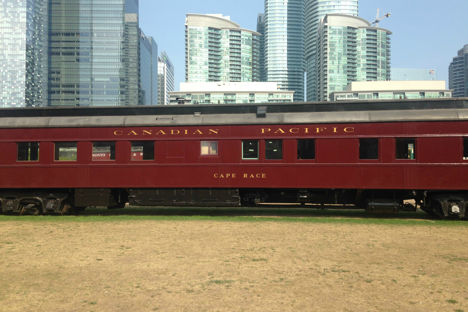
A culinary trip to Toronto
Taking in the sights, smells and flavours of the world's most multicultural city, Isaac Parham discovers some of downtown Toronto's tucked away restaurants.
A culinary trip to Toronto
Taking in the sights, smells and flavours of the world's most multicultural city, Isaac Parham discovers some of downtown Toronto's tucked away restaurants.
I arrive in Toronto on the cusp of autumn, yet temperatures and spirits remain high. The Bluejays are leading the Eastern section of the National Baseball League, the Liberals look set to overthrow the Conservatives from government in the upcoming election and the city’s sun-streaked streets radiate with a late-season buzz. The sub-zero temperatures and subterranean walkways of winter beckon but for the moment everything is above ground and dandy.
From first impressions, the city’s food and drink scene also seems buoyant. In the Downtown area, where I’m staying, people gather in craft beer and burger joints and spill out of happy hour bars with luminous cocktails in hand.
It seems here, as in most major Western cities these days, concept is king. Which is fine. But I’m looking for a more honest slice of Toronto’s culinary culture: the dishes of its past, the restaurants of its future and the chefs of the here and now. So after a few days spent mooching around elevated fast food joints and sandwich bars, I resolve to expand my horizons a little.
Where else to start but with poutine, probably Canada’s most well-known dish. From its Gallic-sounding name you could forgiven for imagining some elaborate, Escoffier-like creation. Not quite.
In reality, poutine is essentially chips and gravy with some gloopy cubes of cheese on top. And while I realise this description may make me sound incredibly uncultured, I can only say what I see. And sitting here in the food hall of the city’s largest mall with a large bowl of the stuff in front me, I see, well, a poor man’s chips and gravy. Sorry. (To be fair, poutine is everywhere in Toronto and I think I have chosen the wrong place to sample it. Perhaps the lesson here is you get out what you, erm, poutine.)
Moving swiftly on from the dubious delights of poutine, I decide to venture to Bloor Street West for the next stage of my Toronto food odyssey where, acting upon a tip, I seek out a scuffed-up sushi restaurant (Sushi on Bloor) serving bento boxes for under ten Canadian dollars (around five pounds). The food is great, the service oddly bad, but for the price I can’t complain.
The next day I take a tour of Little Italy, where I stumble upon a bustling trattoria (Vivoli) with a menu of wood-fired pizzas and enticing fish and seafood dishes. I opt for lobster tagliatelle, which sings with vivid notes of aniseed and citrus and is as good as anything you’d find for the same price in the motherland.
With 140 languages in parlance, Toronto is often considered the most multicultural and diverse city on the planet, and its food scene owes a lot to places like Little Italy (and for that matter, Little Portugal, Chinatown, Little Jamaica, Greektown and Koreatown, too). Think of it as a completed jigsaw of a town, pieced together by a series of little hamlets each with its own unique heritage and culture.
Yet for all the dazzling array of cuisines and choice on offer, I can’t help but wonder whether I am missing something. As I come towards the end of my trip I decide to do a little more digging.
I find a list of the city’s top twenty restaurants as chosen by a leading local restaurant critic. Most are in the mould of swish, new-wave Parisian bistro or upmarket Mexican, but one place stands out, billed on its website as being ‘inspired from the historic foods of the natives, early settlers and subsequent immigrant groups’. I book into Boralia, located on Ossington Avenue, for the last evening of my trip.
Isaac Parham
I have saved the best for last. The small plates offer focused reprisals of classic Canadian combinations – some even have circa dates listed – and feature exciting local ingredients. Sockeye salmon comes mildly smoked with that meaty, freshwater flavour still intact; scallops are sliced and served raw, their mild, supple flavour vivified by waves of chilli and melon-balled cucumber; elk, musky and gamey, is carried along by a Christmassy cranberry gastrique and topped off with a wild rice-crusted poached egg. And then comes the real showstopper: mussels enclosed in a cloche that is lifted away at the table to reveal a heady pine needle smoke, with a broth so moreishly good that another round of bread is called for. It’s not all perfect – desserts are disappointingly mundane – but by and large Boralia lives up to its top twenty billing. The past has never tasted so good.
And yet in many ways the restaurant feels acutely of its time, right down from the small plate concept to the conceptual décor and dusky lighting. Perhaps it even points to the future, too, with its subtle fusion food influences and, ironically, the way in which it seamlessly reclaims the past.


